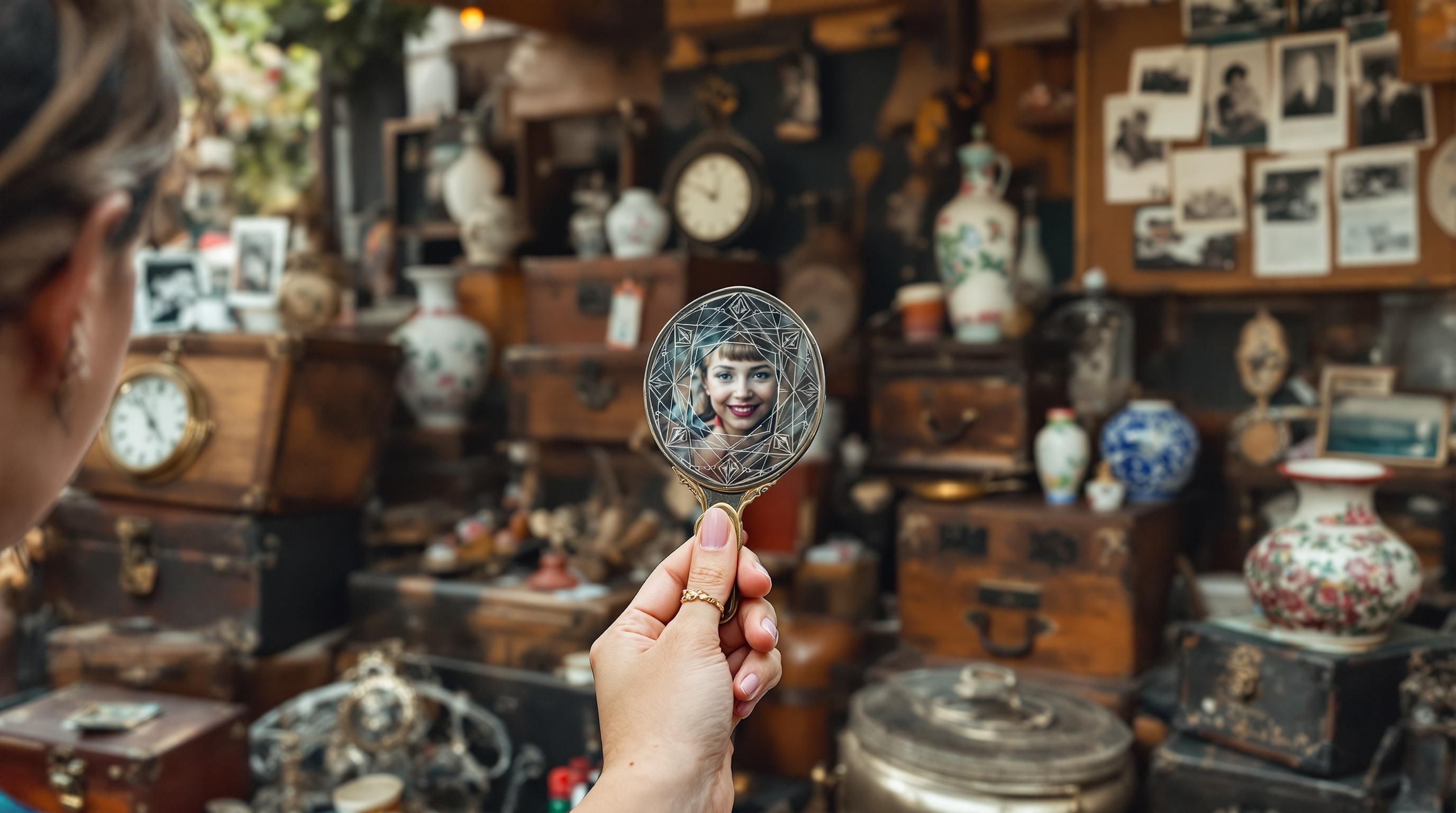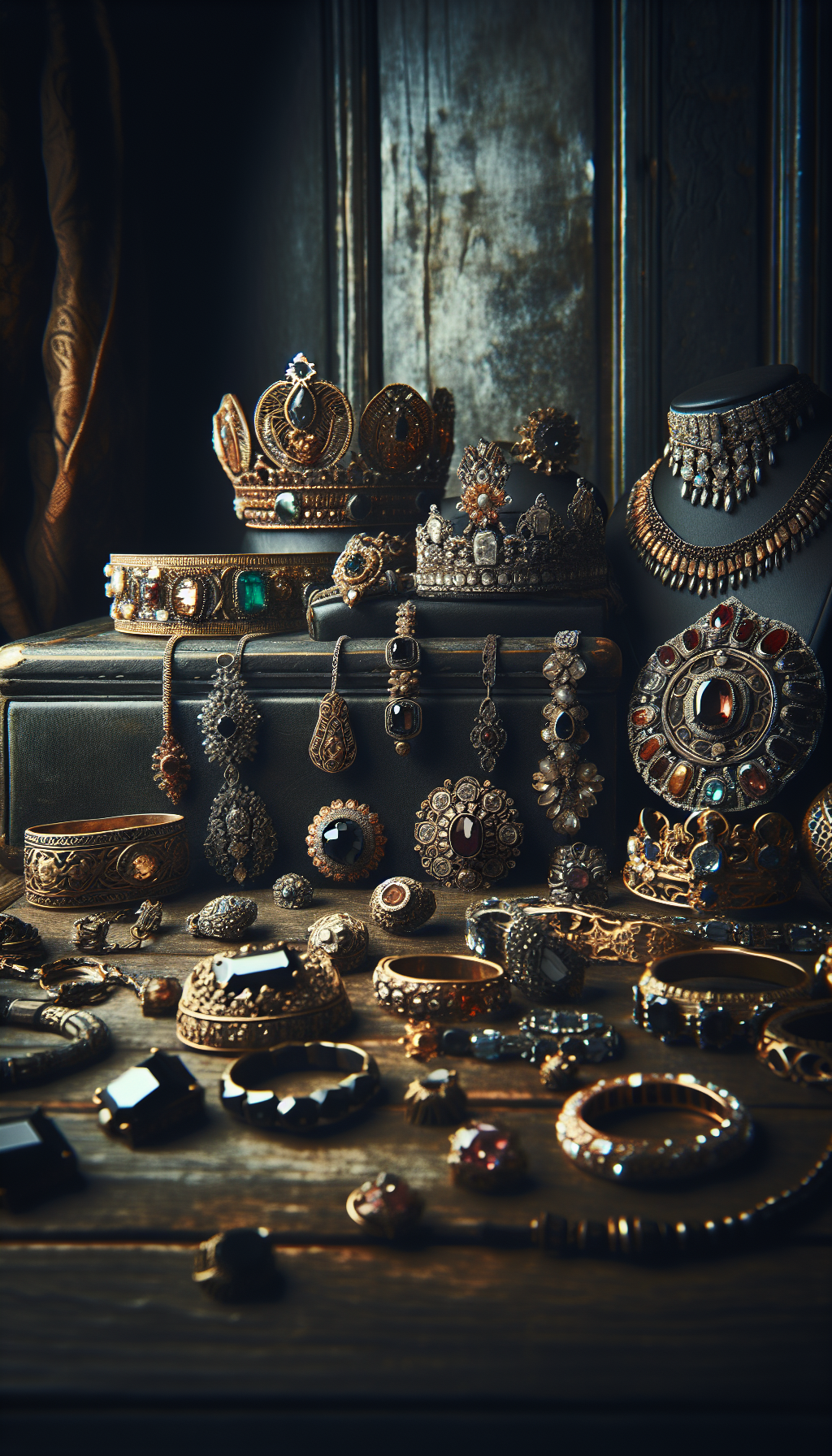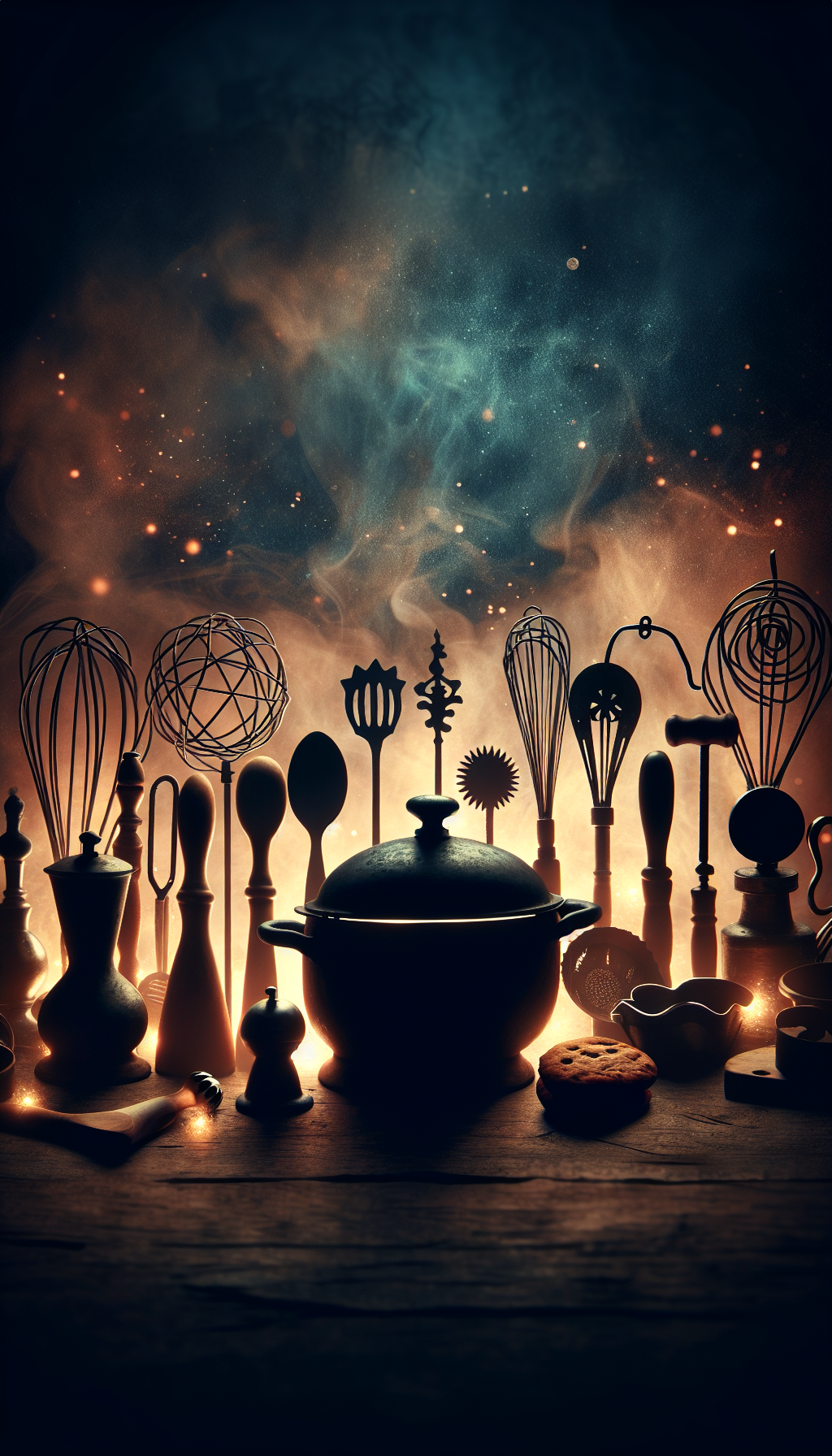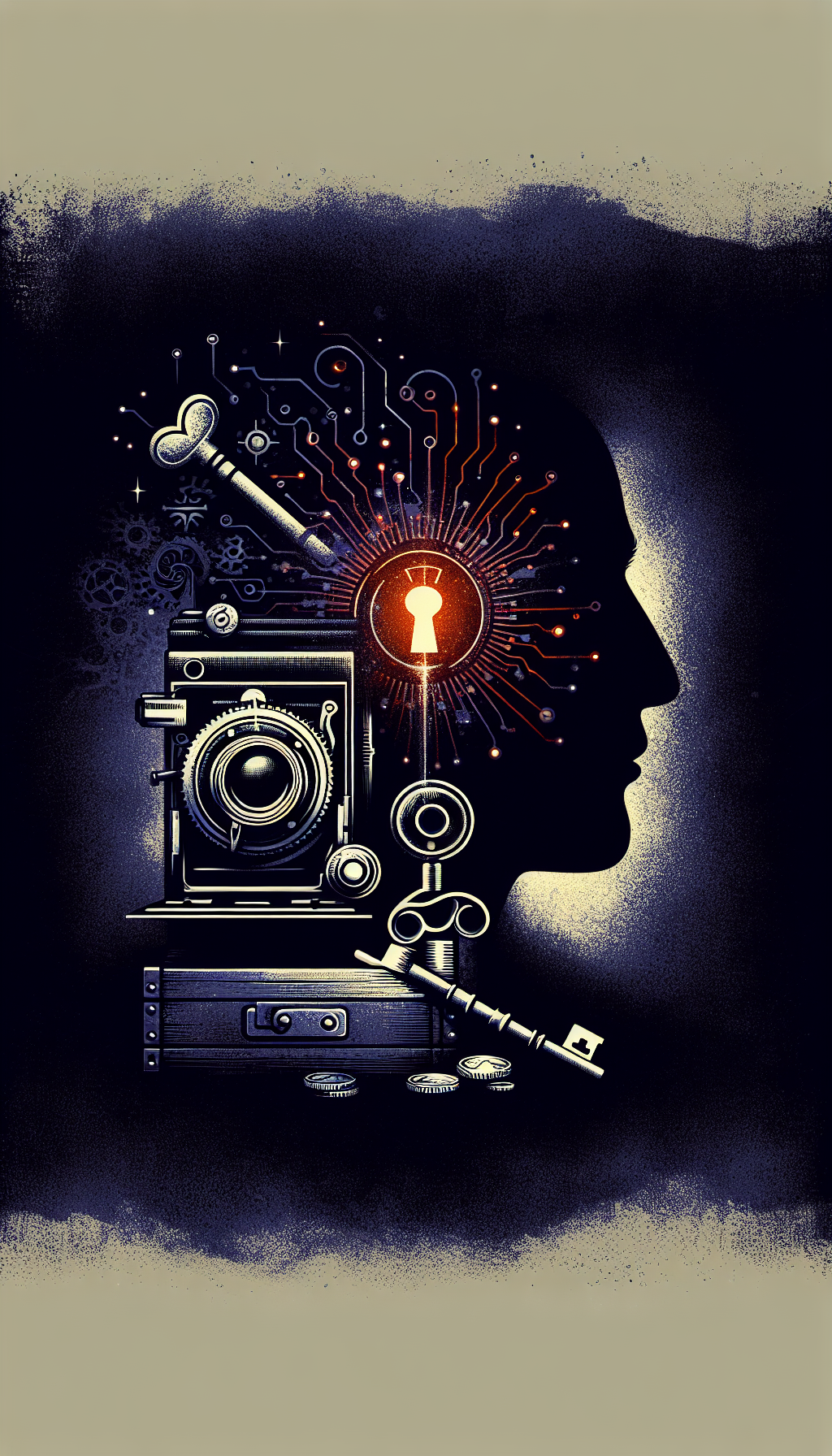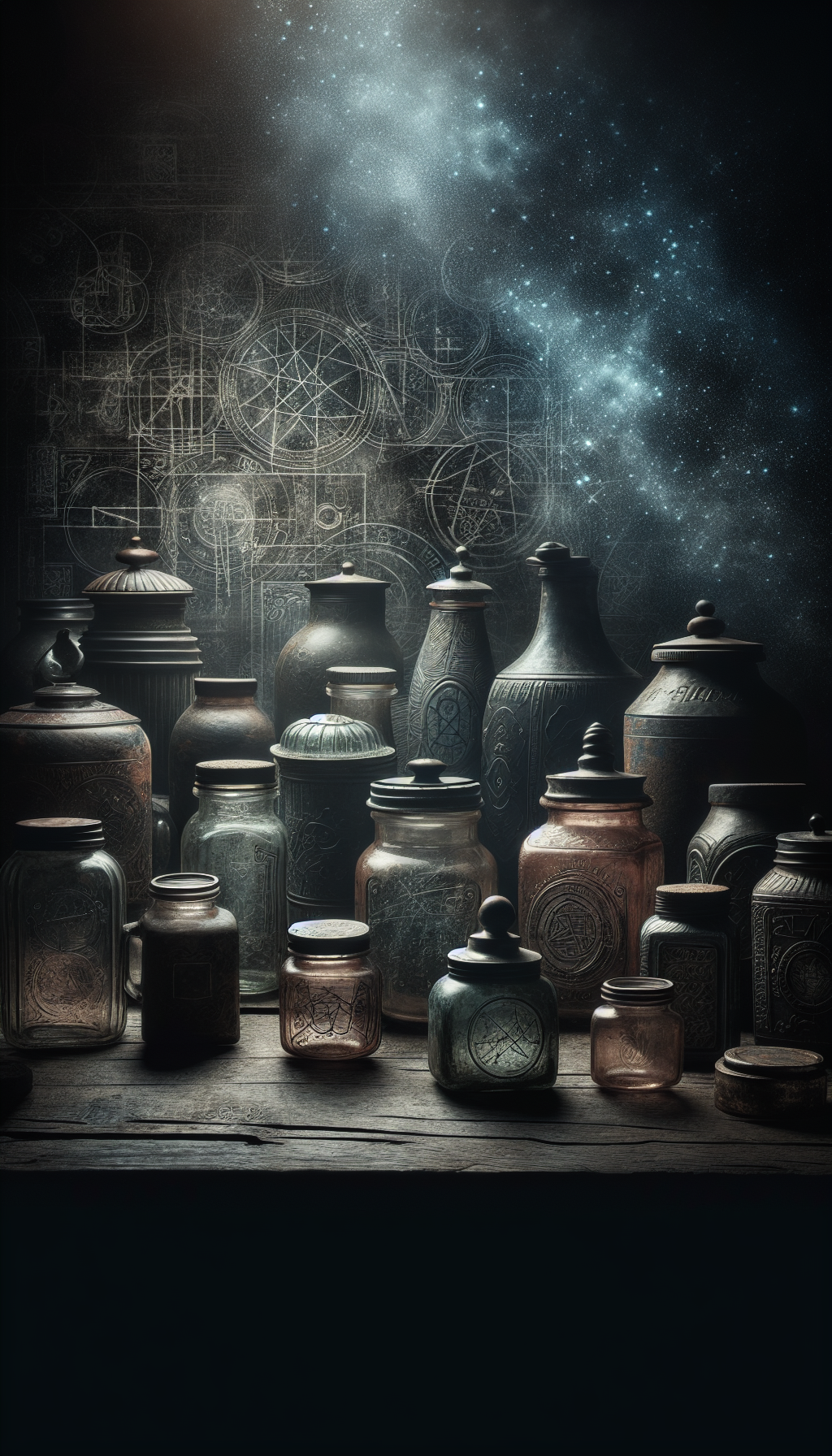Introduction to Antique Hand Mirrors
Hand mirrors have been treasured accessories for thousands of years, serving both practical and decorative purposes throughout human history. From ancient civilizations to modern times, these personal grooming tools have evolved in design, materials, and cultural significance.
The Historical Evolution of Hand Mirrors
Hand mirrors date back to ancient times, with the earliest examples crafted from polished metal, obsidian, or other reflective materials. As manufacturing techniques advanced, so did the artistry and materials used in their creation. By the Victorian and Art Nouveau periods, hand mirrors had become essential vanity items and symbols of status and wealth.
Evolution of Antique Hand Mirrors
- Ancient Times
Early Hand Mirrors
The earliest hand mirrors were crafted from polished bronze, copper, and other metals in ancient Egypt, Greece, China, and Rome. These early mirrors were often adorned with mythological motifs and served both practical and spiritual purposes. - 15th-17th Centuries
Renaissance Mirrors
Glass mirrors backed with tin and mercury became more common, though still luxury items. Ornate frames reflected Renaissance artistic styles with elaborate carvings and gilding. - 1837-1901
Victorian Era
The Victorian period saw an explosion in hand mirror production and designs. Silver, silver plate, and brass frames with intricate repousse work, often featuring floral motifs, became popular vanity accessories. - 1890-1910
Art Nouveau Period
Characterized by flowing, organic lines and nature-inspired motifs. Materials included silver, bronze, and carved wood. Notable makers include Tiffany, Gorham, and WMF. - 1910-1939
Art Deco Period
Featured geometric patterns and streamlined forms. Materials included chrome, Bakelite, and other early plastics alongside traditional metals.
The value and collectibility of antique hand mirrors today are determined by several factors including age, condition, materials, maker, and artistic merit. Understanding these elements is essential for collectors and enthusiasts looking to identify and properly value these historical artifacts.
Identifying Materials and Construction
Common Materials in Antique Hand Mirrors
The materials used in antique hand mirrors varied widely depending on the era, region, and intended market:
Frames and Handles:
- Sterling Silver: Often marked with hallmarks indicating purity (e.g., “Sterling” or “925”)
- Silver Plate: Less expensive than sterling, popular in Victorian and Edwardian eras
- German Silver: An alloy containing no actual silver, often marked “800” with a crown and crescent moon
- Bronze and Brass: Common in Art Nouveau and earlier periods
- Carved Wood: Ranging from simple designs to intricate carvings
- Celluloid and Early Plastics: Common in early 20th century pieces
- Ivory and Bone: Found in higher-end antique mirrors (now regulated by international laws)
Mirror Glass:
- Mercury Glass: Pre-1840s mirrors often used mercury backing, which develops a distinctive patina
- Silver Nitrate Backing: Replaced mercury after 1840 due to health concerns
- Beveled Edges: Often indicate higher quality craftsmanship
Key Identification Markers
Mercury vs. Silver Backing: Mercury-backed mirrors (pre-1840s) have a distinctive crystalline or sparkly appearance, while silver-backed mirrors are more uniformly reflective.
Glass Imperfections: Authentic antique mirror glass typically has imperfections, bubbles, or slight waviness—perfect glass often indicates a reproduction.
Patination Pattern: Genuine aging on mirror backs typically shows dark spots concentrated at the bottom where moisture would naturally settle over time.
Testing Methods for Authenticity
A simple test to determine if a mirror is mercury-backed: place a thin object like a toothpick on the surface. If there appears to be a gap between the object and its reflection, it likely contains mercury backing, indicating it’s pre-1840s.
For silver identification, look for hallmarks stamped on the frame or handle. These can indicate country of origin, maker, and silver content (purity). Common hallmarks include:
- Lion passant (walking lion): British sterling silver
- Eagle head: French silver
- Crown with crescent moon: German silver
- “800” or “900”: European silver content by parts per thousand
- “Sterling” or “925”: 92.5% pure silver (American or British)
Identifying Styles and Periods
Victorian Era (1837-1901)
Victorian hand mirrors are among the most common antique mirrors found today. They typically feature:
- Ornate, heavily detailed designs with floral and nature motifs
- Repousse work (raised relief designs)
- Primarily silver or silver-plated frames
- Often part of larger vanity or dresser sets
- Heavy, substantial construction
Art Nouveau Period (1890-1910)
Art Nouveau mirrors are highly prized for their artistic value and display these characteristics:
- Flowing, organic lines with naturalistic themes
- Depictions of flowers, vines, women with flowing hair
- Whiplash curves and asymmetrical designs
- Cast bronze or silver frames
- Often signed by notable makers like Tiffany or Gorham
Art Deco Period (1910-1939)
Art Deco mirrors reflect the modernist movement with:
- Geometric patterns and streamlined forms
- Bold, symmetrical designs
- Chrome, bakelite, and early plastics
- Less ornate than previous periods
- Often featuring stepped or zigzag motifs
Edwardian Era (1901-1914)
Edwardian hand mirrors tend to feature:
- Lighter, more delicate designs than Victorian pieces
- Neoclassical influences with more restraint
- Silver or silver plate with engraving
- Often part of matching vanity sets
Price Ranges by Style and Period
Current market values for antique hand mirrors in good condition
</tbody>
</table>
Maker's Marks and Hallmarks

Reading Hallmarks
Hallmarks can reveal crucial information about your mirror’s origin, age, and quality. Look for small stamps, typically found on:
- The back of the mirror frame
- The handle
- The rim or edge of the frame
- Sometimes on the mirror back (metal backing)
Different countries used specific hallmarking systems:
American Silver Marks:
- “Sterling” or “925” indicates 92.5% silver content
- Maker’s name or logo often stamped alongside
- No date letters system like European marks
- Notable American makers: Gorham, Tiffany & Co., Unger Brothers, R. Wallace
British Silver Marks:
- Lion passant (walking lion) indicates sterling standard
- Date letter changes annually, can precisely date an item
- Town mark indicates where it was assayed
- Maker’s mark shows who produced it
Continental European Marks:
- Various systems depending on country
- Often include numerical fineness mark (800, 830, 900, 925)
- National symbols (e.g., German crown and crescent moon)
Common Maker’s Marks to Look For:
- Gorham Manufacturing Company: Anchor, lion, letter G
- Tiffany & Co.: “TIFFANY & CO”, “STERLING”, often with pattern numbers
- International Silver Company: I.S.Co. or various subsidiary marks
- Unger Brothers: “UNGER BROS” with logo
- William B. Kerr & Co.: “W.B.K & Co.”
- R. Wallace & Sons: “R. WALLACE” or “WALLACE”
Online Resources for Hallmark Identification
Several online databases can help identify unfamiliar hallmarks:
- The Silver Collector - Comprehensive database of silver marks
- Online Encyclopedia of Silver Marks - Extensive reference for international hallmarks
- Antique Marks - General guide to various antique marks
Hallmark Identification Checklist
Check these areas for potential hallmarks and maker's marks
- Back edge of mirror frame
- Handle near connection to frame
- Inside rim of mirror
- Metal backing plate (if present)
- Bottom of handle
Evaluating Condition and Restoration
Common Condition Issues
Antique hand mirrors frequently exhibit several condition issues that affect their value:
Mirror Glass Deterioration
- Desilvering (loss of reflective backing)
- Cloudy spots or foxing
- Cracks or chips
- Complete replacement (significantly reduces value)
Frame and Handle Damage
- Dents, bends, or breaks in metal frames
- Tarnish and corrosion (especially on silver)
- Missing elements from decorative features
- Splits or cracks in wooden or celluloid handles
Repair and Restoration Signs
- Solder marks where pieces have been reattached
- Mismatched patina indicating replaced parts
- Modern adhesives or materials used in repairs
- Overly polished surfaces erasing original detail
Assessing Original vs. Restored Condition
When examining an antique hand mirror, look for these indicators of originality:
- Consistent Aging: The patina should appear consistent across all parts
- Manufacturing Methods: Look for hand-forged elements and tool marks consistent with the era
- Material Continuity: All materials should be period-appropriate
- Wear Patterns: Natural wear should correspond to how the mirror would have been used
Appropriate conservation methods that preserve value include:
- Gentle cleaning without removing all tarnish/patina
- Stabilization of loose elements using reversible methods
- Documentation of any significant repairs
Condition Assessment Guide
Check applicable items to evaluate your mirror's condition
- Original mirror glass intact (no replacement)
- No cracks, chips, or severe desilvering in glass
- Frame intact without repairs or soldering
- Decorative elements complete without replacement
- Handle firmly attached to frame
- Consistent patina across all components
- No modern repair materials visible
- Original finish (not overly polished or replated)
Notable Antique Hand Mirror Auction Results
Recent sales of exceptional antique hand mirrors
| Category | Price | Notes |
|---|---|---|
| Victorian Silver | $100-$500 | Common examples with standard decoration |
| Victorian Silver (Ornate) | $500-$1,200 | Exceptional condition or craftsmanship |
| Art Nouveau Silver | $400-$2,500 | Depends on maker and artistic merit |
| Art Nouveau Bronze | $300-$1,500 | Higher for signed pieces by known makers |
| Art Deco | $100-$800 | Higher for rare materials or designs |
| Celluloid/Early Plastic | $50-$300 | Condition critical to value |
</tbody>
</table>
Detecting Reproductions and Fakes
Common Reproduction Indicators
Several telltale signs can help identify reproductions and fakes:
Material Inconsistencies
- Modern mirror glass (too perfect, lacking imperfections)
- Incorrect metal composition or weight
- Machine-made uniformity in supposedly handcrafted pieces
Manufacturing Details
- Machine-stamped rather than hand-tooled details
- Perfect symmetry in designs that should show slight hand-crafted irregularities
- Modern fasteners, screws, or attachment methods
Artificially Aged Features
- Uniform tarnish or patina applied all at once
- Intentional damage meant to simulate age
- Artificially distressed mirror backing
Altered or Fake Hallmarks
- Added or enhanced hallmarks
- Inconsistent mark placement
- Hallmarks that don’t match the style period of the mirror
Many high-quality reproductions of Art Nouveau and Victorian mirrors were made during the 1970s-1990s revival periods. These pieces often combined elements from different antique designs and can be mistaken for originals.
Authentication Tools and Techniques
Consider these methods when authenticating an antique hand mirror:
- Magnification: Use a jeweler’s loupe to examine hallmarks and construction details
- Black Light: Some modern materials fluoresce differently under UV light
- Weight Assessment: Genuine silver items have a distinctive heft
- Expert Consultation: For valuable pieces, professional authentication is worth the investment
Red Flags for Reproductions
Perfect Glass: Genuine antique mirror glass almost always shows some imperfections, bubbles, or waviness.
Machine Precision: Too-perfect symmetry in designs and pattern repeats often indicates modern manufacturing methods.
Inconsistent Wear: Artificial aging usually doesn’t accurately replicate natural wear patterns where handling would occur.
Collecting Strategies and Care
Building a Collection
Whether you’re a serious collector or casual enthusiast, consider these approaches to collecting antique hand mirrors:
Specialization Options
- Focus on a specific time period (Victorian, Art Nouveau, Art Deco)
- Collect by material (sterling silver, bronze, celluloid)
- Focus on a particular maker (Tiffany, Gorham, Unger Brothers)
- Theme-based collection (figural designs, floral motifs, etc.)
Market Awareness
- Monitor auction results to understand current market values
- Research price trends for your area of interest
- Learn which characteristics command premium prices
- Build relationships with reputable dealers
Purchase Considerations
- Condition is paramount, especially for the mirror glass
- Original components typically maintain better value than restored pieces
- Provenance can add significant value
- Documentation of authenticity for important pieces
Proper Care and Storage
Preserving your antique mirrors requires attention to these factors:
Cleaning and Maintenance
- Clean silver gently with appropriate silver polish or cloths
- Avoid harsh chemicals on mirror glass
- Use mild soap and water for celluloid or early plastics
- Consider professional conservation for valuable pieces
Environmental Conditions
- Store in stable temperature and humidity
- Avoid direct sunlight which can damage mirror backing
- Use acid-free tissue for wrapping
- Prevent contact with rubber or certain plastics that can cause damage
Display Recommendations
- Consider display stands specifically designed for hand mirrors
- Use museum wax to secure mirrors in vertical displays
- Rotate displayed items to prevent excessive light exposure
- Consider UV-filtering glass in display cases
External Resources for Collectors
Collectors Weekly - Hand Mirrors
An extensive guide with information about vintage and antique hand mirrors, including history, styles, and collecting information.
The Silver Chatter - Silver Identification
Comprehensive database for identifying silver marks, makers, and patterns on antique silver items including hand mirrors.
Invaluable - Antique Mirrors Guide
Expert guide to identifying and collecting various types of antique mirrors, including handheld varieties.
Reddit r/Antiques
Active community where collectors discuss and help identify antique items, including hand mirrors.
Nimbus Antiques - Mirror Buyer's Guide
Detailed buyer's guide for antique mirrors with information on styles, periods, and what to look for when purchasing.
eBay Collectible Hand Mirrors
Marketplace featuring a wide variety of antique and vintage hand mirrors for sale, useful for price comparison.
Common Questions About Antique Hand Mirrors
How can I tell how old my hand mirror is?
Dating an antique hand mirror involves examining multiple factors:
- Style and design elements (Victorian, Art Nouveau, Art Deco)
- Materials used (mercury vs. silver backing, frame materials)
- Hallmarks and maker’s marks (especially on silver pieces)
- Construction techniques (hand vs. machine-made elements)
- Glass imperfections and manufacturing methods
For silver mirrors, hallmarks often provide the most precise dating. For example, British silver uses date letters that change annually, allowing exact dating. American silver may have company marks that existed during specific date ranges. The style of decoration can also help narrow down the time period.
How do I identify the maker of my antique silver hand mirror?
To identify the maker of your silver hand mirror:
- Examine all surfaces for hallmarks or maker’s marks, particularly the handle, back edge of the frame, and metal backing (if present)
- Use a magnifying glass or jeweler’s loupe for small marks
- Look for company names, initials, logos, or symbols
- Note any additional marks indicating silver content (Sterling, 925, 800, etc.)
- Consult online hallmark databases or reference books
- For unmarked pieces, research distinctive design characteristics associated with specific manufacturers
For American silver, makers like Gorham, Tiffany, Wallace, and Unger Brothers had distinctive marks. European pieces will have different hallmarking systems based on their country of origin.
How can I tell if my mirror is solid silver or silver-plated?
Distinguishing between solid silver (sterling) and silver-plated mirrors:
- Check for hallmarks - Sterling is typically marked "Sterling," "925," or with appropriate hallmarks for the country of origin
- Silver plate may be marked "EPNS" (Electroplated Nickel Silver), "Silver on Copper," or similar terms
- Weight - Sterling pieces are generally heavier than plated ones
- Look for wear patterns - Plated items may show brass or copper base metal where the plating has worn through, particularly on edges and high points
- Magnet test - Sterling silver is not magnetic (though this isn’t definitive as many non-magnetic metals are used for base metal)
- Consult a professional appraiser for definitive identification
Be aware that German silver (also called nickel silver) contains no actual silver despite the name - it’s an alloy of copper, nickel, and zinc designed to resemble silver.
What makes an antique hand mirror valuable?
Several factors influence the value of antique hand mirrors:
- Maker: Pieces by renowned manufacturers like Tiffany, Gorham, or WMF command premium prices
- Materials: Sterling silver generally holds more value than silver plate or other metals
- Condition: Original mirror glass, intact decorative elements, and minimal damage significantly increase value
- Rarity: Unusual designs, limited production items, or pieces from specific historical periods
- Artistic Merit: Exceptional craftsmanship, design innovation, or artistic execution
- Provenance: Documented history of ownership, especially if associated with historical figures
- Completeness: If part of a matching set or vanity collection, complete sets are worth more
Art Nouveau mirrors by known designers typically bring the highest prices, with exceptional examples selling for thousands of dollars at auction.
How do I properly clean and restore an antique mirror?
Proper cleaning and conservation of antique mirrors:
For the frame:
- Silver: Use a good quality silver polish sparingly, or a silver cleaning cloth. Avoid excessive cleaning that removes all patina.
- Brass/Bronze: Mild soap and water for cleaning; consider professional advice before applying any patina products.
- Wood: Dust regularly and occasionally treat with an appropriate wood conditioner.
- Celluloid/Early Plastics: Only clean with mild soap and water, as chemical cleaners can damage these materials.
For the mirror glass:
- Clean gently with a soft cloth and diluted glass cleaner (spray on cloth, not directly on mirror)
- Never scrape at the backing
- For severely deteriorated mirror glass, consult a professional restorer
Important cautions:
- Avoid DIY resilvering attempts
- Preserve original patina when possible
- Document the mirror’s condition before any cleaning or restoration
Consider professional conservation for valuable pieces
How can I tell if my mirror has mercury backing?
Mercury-backed mirrors (pre-1840s) have distinctive characteristics:
Visual Appearance: Mercury glass has a distinctive crystalline or sparkly appearance, often with a slightly bluish-silver tint
Reflection Test: Place a pen or thin object on the mirror surface. With mercury mirrors, there appears to be a small gap between the object and its reflection due to the thickness of the glass and backing
Flowing Pattern: When tilted, mercury-backed mirrors sometimes show a subtle flowing or rippling effect due to the liquid nature of mercury
Weight: Mercury-backed mirrors are noticeably heavier than later silver nitrate mirrors
Deterioration Pattern: Aging mercury mirrors develop a distinctive crystalline deterioration pattern unlike the black spotting of silver nitrate mirrors
Remember that mercury was phased out after the 1840s due to health concerns, so most Victorian and later mirrors use silver nitrate backing instead.
Where are the best places to find authentic antique hand mirrors?
The best sources for finding authentic antique hand mirrors include:
Specialized Antique Dealers: Dealers focusing on silver, vanity items, or specific time periods like Victorian or Art Nouveau
Auction Houses: Both major houses (Christie’s, Sotheby’s) for high-end pieces and smaller regional auctions
Antique Shows and Fairs: Events specializing in jewelry, silver, or decorative arts
Estate Sales: Particularly in older, established neighborhoods where complete vanity sets might be found
Online Marketplaces: eBay, Etsy, Ruby Lane, and 1stDibs, though careful authentication is important
Antique Malls: Large multi-dealer venues often have several dealers specializing in vanity items
Inheritance and Family Collections: Some of the best pieces remain in family collections, occasionally becoming available
When purchasing, always ask about provenance, condition issues, and return policies. For valuable pieces, consider having an independent appraisal done before finalizing the purchase.
Conclusion
Antique hand mirrors offer a fascinating glimpse into the decorative arts, social customs, and manufacturing techniques of their respective eras. From the ornate repousse work of Victorian silver to the flowing organic lines of Art Nouveau designs and the bold geometric patterns of Art Deco pieces, these personal accessories reflect changing artistic sensibilities throughout history.
For collectors and enthusiasts, the joy of discovering, authenticating, and preserving these pieces connects us to the past while appreciating the craftsmanship that often exceeds what is commercially available today. Whether you’re drawn to the historical significance, artistic merit, or simple elegance of these objects, developing a discerning eye for quality and authenticity is essential.
By understanding hallmarks, materials, construction techniques, and stylistic elements, you can confidently identify and evaluate antique hand mirrors, whether for collecting, decorating, or investment purposes. With proper care and appreciation, these beautiful artifacts can continue to delight and serve for generations to come.

Get a Professional Appraisal
Unsure about your item’s value? Our certified experts provide fast, written appraisals you can trust.
- Expert report with photos and comps
- Fast turnaround
- Fixed, upfront pricing
No obligation. Secure upload.
| Item | Price | Date | Auction House |
|---|---|---|---|
| Art Nouveau Silver Hand Mirror by Unger Brothers | $2,700 | March 2023 | Christie's |
| Tiffany & Co. Sterling Silver Hand Mirror, c.1900 | $3,250 | November 2022 | Sotheby's |
| Victorian Silver Repousse Mirror with Cherubs | $875 | January 2023 | eBay |
| Art Deco Chrome and Bakelite Mirror Set | $425 | February 2023 | Heritage Auctions |
